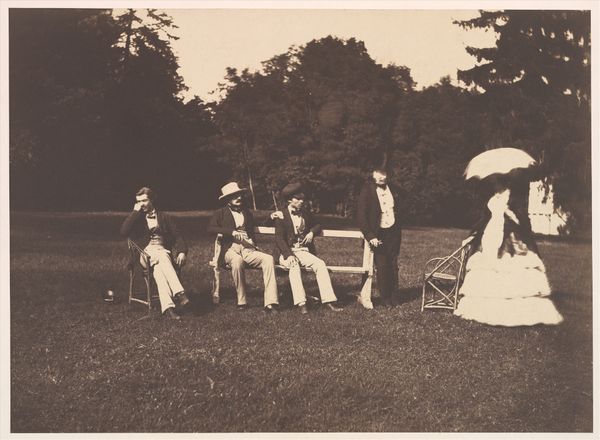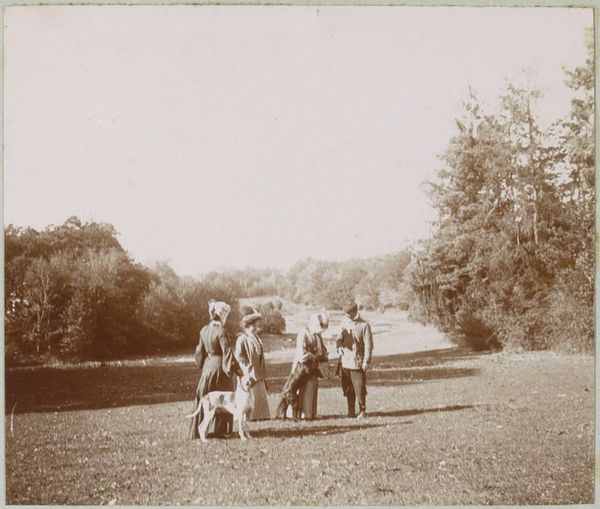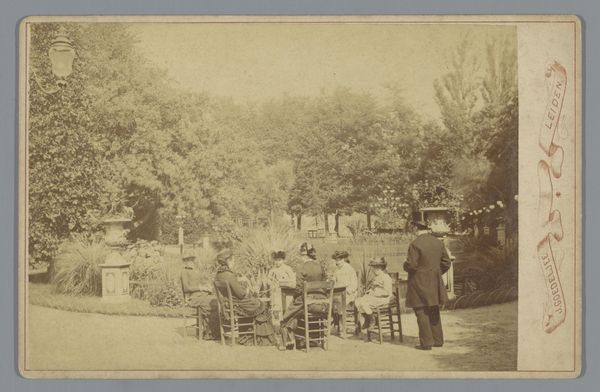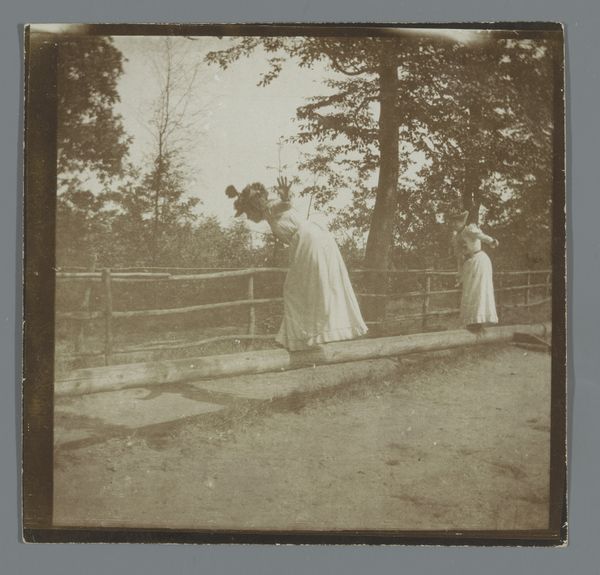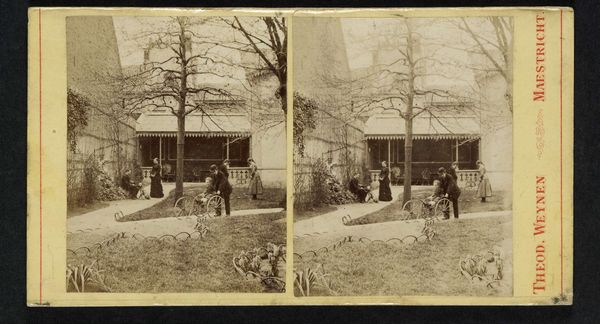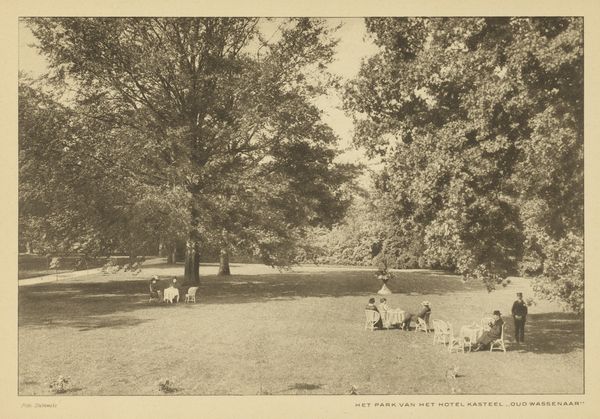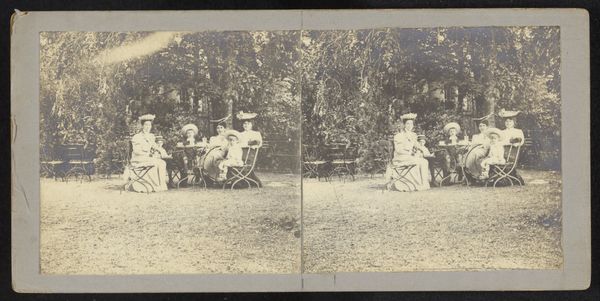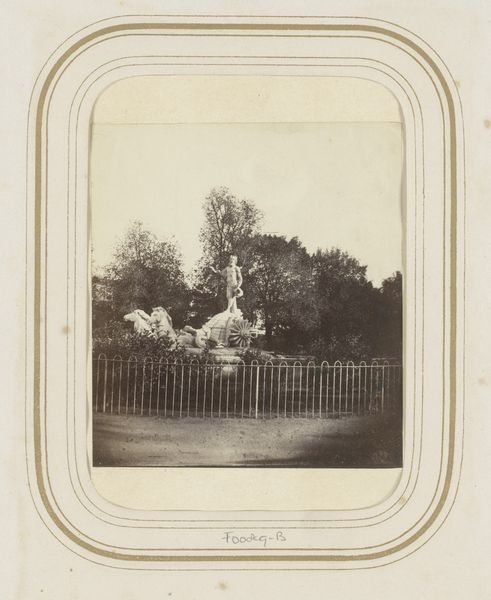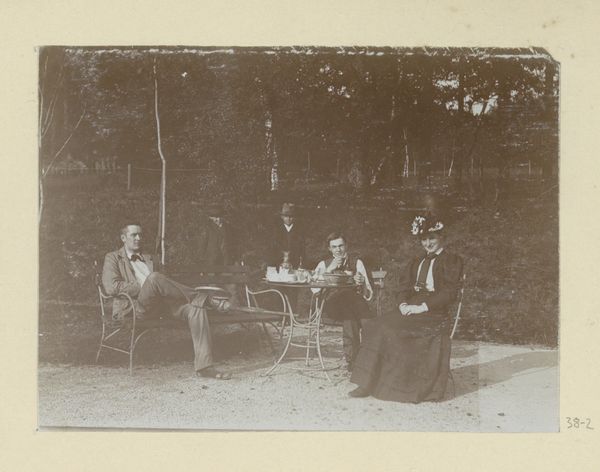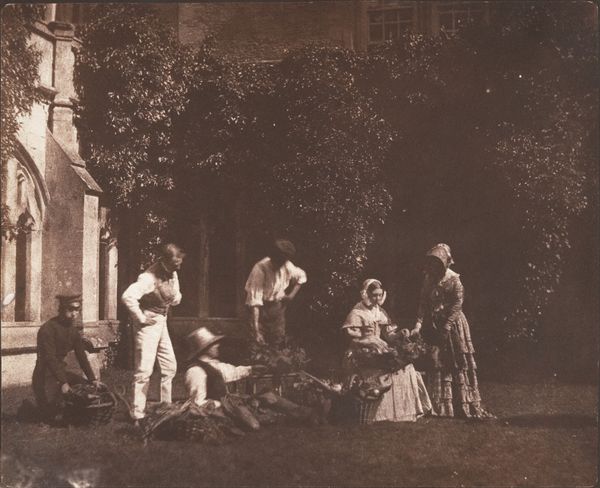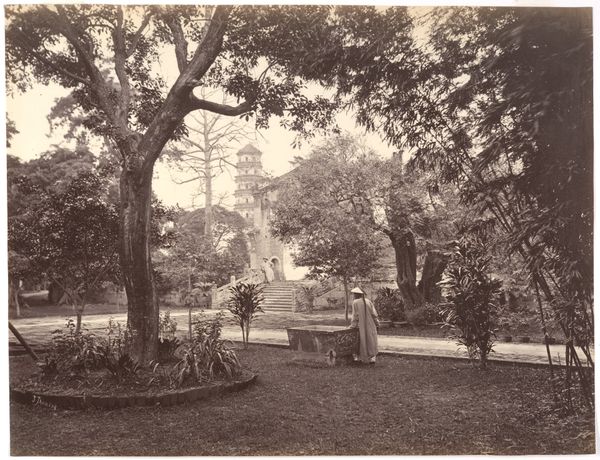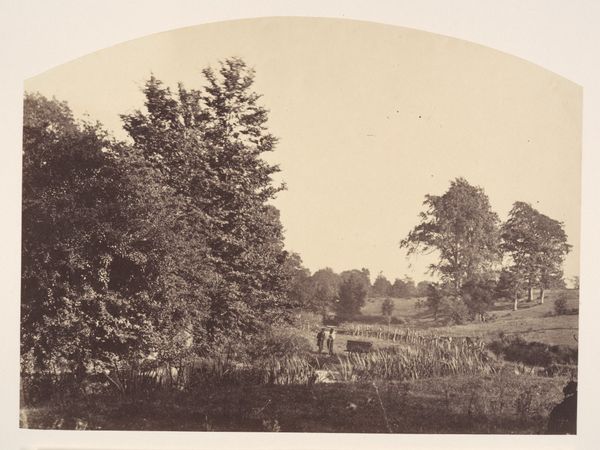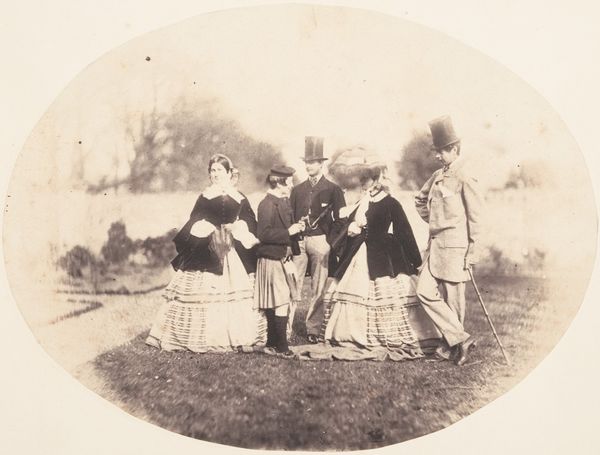
Dimensions: image/sheet: 15.5 × 27.2 cm (6 1/8 × 10 11/16 in.) mount: 25.3 × 36.7 cm (9 15/16 × 14 7/16 in.)
Copyright: National Gallery of Art: CC0 1.0
Curator: Let’s turn our attention to this remarkable albumen print from the 1860s. Its title is "Essay with a Revolving Camera," attributed to an anonymous photographer. Editor: The scene feels suspended, doesn't it? Like a fleeting moment captured, but with a strange timelessness. The sepia tones give it a dreamy quality, yet the figures seem quite stiff. Curator: The figures arranged on the lawn invite a few speculations about social roles and norms within nineteenth-century British society. We might observe their fashion for clues or simply to revel in its period character. How are gender roles and power dynamics playing out in their gestures and grouping? Editor: Right, but I also read something darker in this composition. These people are gathered in leisure, with a somewhat alien gaze given how aware they are of the photographer, yet this sense of staged comfort exists because of imperial conquest and resource extraction elsewhere. What we see here relies upon unacknowledged, displaced realities. Curator: Interesting, especially considering the formal pose, this arrangement certainly feels posed, a tableau vivant. We have to remember photography was still relatively novel at the time. I find that there is still much to be extracted in an act of observation in its visual encoding; notice how all but two are grouped as couples of gendered counterpart—the balance. Editor: And, because the photographer is unknown, it really becomes about us, the viewers. We inevitably project our own values onto these spectral figures, especially considering our contemporary knowledge of Victorian repression and outward display of pomp and circumstance masking real world conflict. Curator: But doesn’t that say more about us and our projections than about the photograph itself? Aren't we just imposing modern anxieties onto the past? We must consider the intent—to mark a time of accomplishment with their society, that it’s captured to become history—we must appreciate what it must represent to the culture that it originated from. Editor: I would say intent is multifaceted here and definitely entangled, that our present interpretation changes the perception of what could be perceived from the photographer. If this photograph were meant to say something specific in the future to our exact situation it could, right? I still wonder though what remains beyond our gaze. Curator: Perhaps the beauty of it is this dialogue, the ever-present tension between how the past perceived itself and how we, the future, perceive it. "Essay with a Revolving Camera," in that sense, invites this perpetual reevaluation. Editor: Yes, that it allows us to witness this cultural narrative play out on the lawn again and again, is why its survival as a historical artifact is important for the ongoing, very important debate about culture, identity, and who’s truly visible within the frame.
Comments
No comments
Be the first to comment and join the conversation on the ultimate creative platform.

